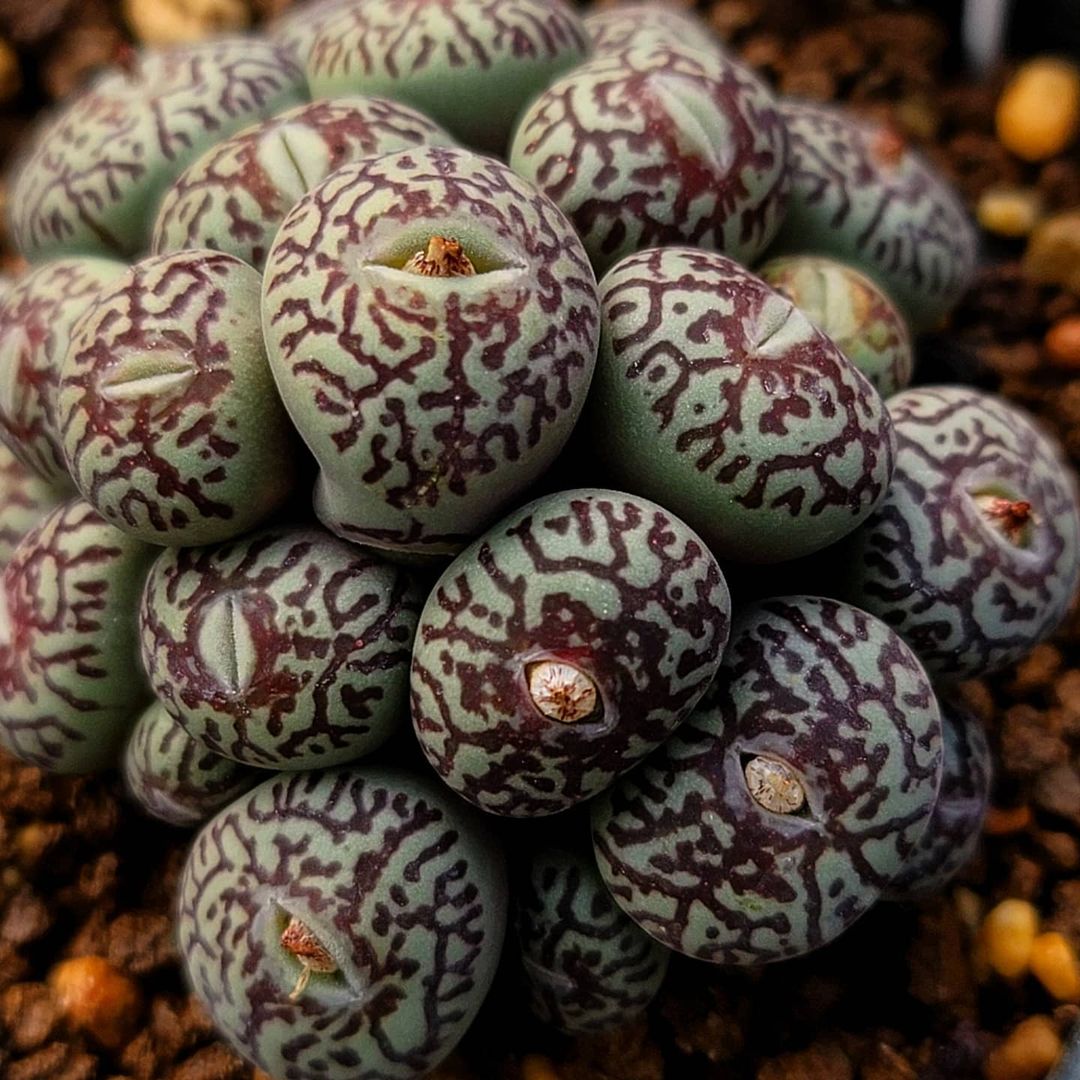Conophytum Wittebergense can be a unique addition to your plant collection due to its eye-ball-like leaves.
Conophytum Wittebergense is a form of Conophytum minimum found in the Witteberg mountains in the Western Cape province of South Africa. This dwarf succulent creates loose mats of glabrous, bumpy leaf bodies patterned with red streaks on the top surface. The body is made of two fleshy, thick leaves almost attached together with a small, hollow gap at the top. Each pair of leaves is oval-shaped and grows up to 0.6 inches tall and 0.4 inches wide. The white, pale yellow, or pale pink-scented flowers bloom at night. They appear in fall from the gap between the foliage. This succulent also produces small capsule-shaped fruits with 4 or 5 sections that contain many hard, dark, and tiny seeds.
USDA Zones: 10a to 11b: from 30 °F (−1.1 °C) to 50 °F (+10 °C)
Propagating Conophytum Wittebergense
You can propagate Conophytum Wittebergense from divisions and seeds.
From Division:
You can grow a new plant from one rooted pair of leaves in the late summer or early fall before plant come from dormancy or after they bloomed. For best results, divide mature Conophytum Wittebergense into clusters of 2-4 rooted pairs of leaves. Take out the plant from container, gently cut across the roots, and repot clusters in separate pots.
From Seeds:
Begin sowing seeds during fall in a container filled with well-draining soil and cover it with a thin layer of sand. Locate the container in a sunny area, and keep the soil evenly soil moil till germination. Germination takes a week or two at temperatures between 65-70 F (15-27 C). When seedlings grow, slowly reduce the watering.
Container Size
The succulent spreads up to 2 feet (60 cm) in diameter in its native place, but when growing at home use containers with a diameter of around 2-4 inches (5-10 cm).
Ideal Growing Conditions for Conophytum Wittebergense

Light
Conophytum Wittebergense prefers bright light but does not expose this plant to direct sunlight. Keep the plant in full sun in cool periods of the day (early morning). As plants come out of dormancy, increase the sun exposure slowly for several days to avoid shocking them. If you notice a plant stretching, it requires more light.
Soil
It grows well in porous soil that drains well fast. You can use a commercial potting mix formulated for growing succulents.
Water
Conophytums need little or no water when they go dormant in the spring. In the fall, when they start growing again, you can water them well, but let the soil dry out before watering again. If the leaves wrinkle while the plant is growing, it means it needs water. Be careful not to water too much, as this can cause root rot or make the plant grow new leaves at the wrong time of year.
Temperature
This succulent does not get affected by high temperatures, but a temperature drop below 32 F (0 C) can harm the plant. In cold areas where winter temperature go below freezing, grow this plant in pots that can be moved indoors.
Conophytum Wittebergense Care
Fertilizer
Conophytums are not heavy feeders, mainly if you repot them every two years. Feed the plant at the start of its growth and before blooming for the best growth. Buy a fertilizer with low nitrogen diluted to half or quarter strength.
Repotting
Repot this succulent every 2 to 4 years according to the pot size and growth rate. The ideal time for repotting is at the start of the active growth period. However, it can be done at any time of the year when plants are growing actively.
Pests and Diseases
Root mealybugs can infest your plant; you can overcome this issue with preventive measures. Water the infected plant with suitable insecticide once in the fall. Slugs, snails, and caterpillars can also attack the plant, you can hunt them at night.
Common diseases cannot affect the conophytum, so dead blooms should be discarded to avoid botrytis.
Toxicity
Conophytum Wittebergense is not poisonous and does not harm homes with kids and pets.



